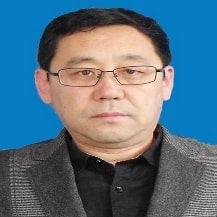Recent Progress in Nanoelectrode Materials for Batteries and Supercapacitors
A special issue of Nanomaterials (ISSN 2079-4991). This special issue belongs to the section "Energy and Catalysis".
Deadline for manuscript submissions: closed (20 January 2024) | Viewed by 2328
Special Issue Editor
Interests: metal-sulfur batteries; solid-state electrolytes; Li-ion batteries; supercapacitors
Special Issues, Collections and Topics in MDPI journals
Special Issue Information
Dear Colleagues,
Currently, the most desired electrochemical energy storage/conversion devices for social development are rechargeable batteries and supercapacitors that combine high energy efficiency, low cost, long cycle life, and high safety. Recent research has found that nanoelectrode materials provide significantly improved ion transport and electronic conductivity compared to traditional battery and supercapacitor electrode materials. They also occupy all available embedding sites in the particle volume, achieving high specific capacity, and fast ion diffusion. These characteristics enable nanoelectrode materials to withstand high currents, providing a promising solution for high-energy-density and high-power-density energy storage/conversion devices. On the other hand, energy storage/conversion devices have been developed vigorously, such as alkali metal-ion batteries, alkali metal batteries, alkali metal sulfur batteries, and supercapacitors. By combining 2D nanostructured materials with high electronic conductivity and high energy density, or assembling them into 3D electrodes at the nanoscale, the electrochemical performance of the devices is significantly improved.
This Special Issue will comprehensively introduce the progress of nanostructures in improving performance of batteries and supercapacitors. This includes the use of spraying, 3D printing, rolling, electrodeposition, layer-by-layer deposition, vacuum filtration, etc. Only by developing convenient and low-cost processing methods for assembling nanoelectrode materials into devices, we take advantage of the advantages of nanoelectrode materials in energy storage/conversion field, which contribute to the development of the energy storage/conversion field. We invite authors to publish original research and review articles covering the current progress of batteries and supercapacitors with nanoelectrodes. Potential themes include, but are not limited to:
- Alkali metal-ion batteries based on nanostructured electrodes;
- Alkali metal batteries based on nanostructured electrodes;
- Alkali metal sulfur/selenium batteries based on nanostructured electrodes;
- Air batteries based on nanostructured electrodes;
- Supercapacitors based on nanostructured electrodes.
Prof. Dr. Bo Jin
Guest Editor
Manuscript Submission Information
Manuscripts should be submitted online at www.mdpi.com by registering and logging in to this website. Once you are registered, click here to go to the submission form. Manuscripts can be submitted until the deadline. All submissions that pass pre-check are peer-reviewed. Accepted papers will be published continuously in the journal (as soon as accepted) and will be listed together on the special issue website. Research articles, review articles as well as short communications are invited. For planned papers, a title and short abstract (about 100 words) can be sent to the Editorial Office for announcement on this website.
Submitted manuscripts should not have been published previously, nor be under consideration for publication elsewhere (except conference proceedings papers). All manuscripts are thoroughly refereed through a single-blind peer-review process. A guide for authors and other relevant information for submission of manuscripts is available on the Instructions for Authors page. Nanomaterials is an international peer-reviewed open access semimonthly journal published by MDPI.
Please visit the Instructions for Authors page before submitting a manuscript. The Article Processing Charge (APC) for publication in this open access journal is 2900 CHF (Swiss Francs). Submitted papers should be well formatted and use good English. Authors may use MDPI's English editing service prior to publication or during author revisions.
Keywords
- secondary batteries
- supercapacitors
- nanomaterials
- nanostructures
- nanoelectrodes






